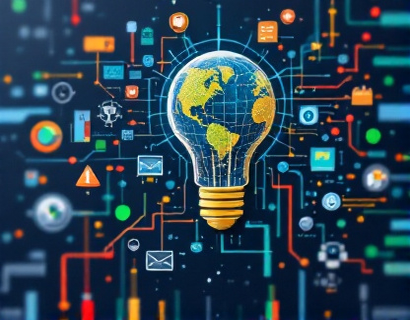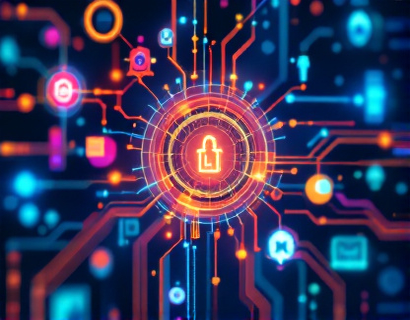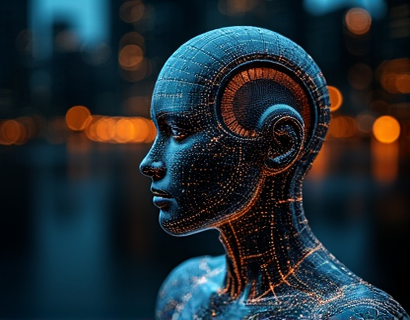Empowering Young Minds: The Role of AI-Powered Educational Chatbots in Safe and Verified Learning
The integration of artificial intelligence in education has opened new avenues for enhancing the learning experience for children and students. One of the most promising developments in this domain is the creation of AI-powered educational chatbots. These chatbots are designed to provide verified and safe access to specialized educational content, tailored specifically for young learners. This article delves into how these innovative chat interfaces are revolutionizing the way children and students access and engage with educational materials, ensuring a secure and enriching environment.
The Need for Verified Educational Content
In the digital age, the abundance of information available online can be both a blessing and a curse. While the internet offers a vast repository of knowledge, it also presents challenges in terms of content verification and safety. For children and students, the risk of encountering misinformation or inappropriate content is higher. This is where the importance of verified educational content becomes paramount. Verified content ensures that the information provided is accurate, up-to-date, and sourced from credible entities. AI-powered educational chatbots play a crucial role in this regard by curating and delivering content that has been rigorously checked and approved.
How AI Chatbots Enhance Learning
AI chatbots are not just about providing information; they are designed to interact with users in a conversational manner, making the learning process more engaging and interactive. These chatbots can understand natural language queries and provide relevant responses, simulating a human-like conversation. For children and students, this means a more personalized and enjoyable learning experience. The chatbot can adapt to the user's level of understanding, offering explanations and examples that are appropriate for their age and knowledge level.
Tailored Learning Experiences
One of the key advantages of AI chatbots in education is their ability to tailor content to individual learners. By analyzing user interactions and performance, the chatbot can identify areas where a student may need additional support or enrichment. This personalized approach ensures that each student receives the right amount of challenge and guidance, fostering a more effective learning environment. For instance, a student struggling with a particular concept can receive extra practice problems or explanatory videos, while a student who grasps the concept quickly can be directed to more advanced materials.
Ensuring a Safe Online Environment
Safety is a top priority when it comes to children's online activities. AI chatbots are equipped with advanced security measures to create a safe and controlled environment for young users. These measures include strict content filtering, real-time monitoring, and user authentication processes. The chatbot can block access to inappropriate content and alert administrators if any suspicious activity is detected. This multi-layered approach ensures that students can explore and learn without exposing themselves to online risks.
Content Verification Process
The verification process for educational content is a critical component of the chatbot's functionality. Content is sourced from reputable educational institutions, government resources, and peer-reviewed journals. Each piece of content undergoes a rigorous review by subject matter experts to ensure accuracy and relevance. The chatbot also employs machine learning algorithms to continuously update and refine the content library, ensuring that it remains current and aligned with the latest educational standards and industry trends.
Interactive and Engaging Learning Tools
To keep students engaged, AI chatbots incorporate a variety of interactive tools and features. These may include quizzes, interactive simulations, and gamified learning activities. For example, a chatbot can present a science concept through an interactive simulation, allowing students to manipulate variables and observe the outcomes in real-time. This hands-on approach not only makes learning more fun but also helps in better retention of information. The chatbot can provide immediate feedback on quizzes and activities, reinforcing learning and building confidence.
Parental and Teacher Involvement
While AI chatbots are designed to be user-friendly, the involvement of parents and teachers is still essential in the educational process. These stakeholders can monitor a student's progress through dashboards that provide insights into the student's interactions and performance. Teachers can also use the chatbot to create customized lesson plans and assign relevant educational materials. This collaborative approach ensures that the educational journey is well-supported and aligned with the student's overall learning goals.
Adaptability to Different Learning Styles
Every child has a unique learning style, and AI chatbots are adept at accommodating these differences. Visual learners can benefit from diagrams and videos, auditory learners from audio explanations, and kinesthetic learners from interactive simulations. The chatbot can detect a user's preferred learning style through initial assessments and subsequent interactions, adjusting the content presentation accordingly. This adaptability ensures that all students can engage with the material in a way that suits them best, enhancing the overall learning experience.
Building Critical Thinking Skills
Beyond providing information, AI chatbots can play a significant role in developing critical thinking skills. By presenting students with open-ended questions and scenarios, the chatbot encourages them to think critically and solve problems creatively. For example, a chatbot might present a real-world problem related to a specific industry and guide the student through the process of identifying solutions, evaluating options, and justifying choices. This approach not only deepens understanding but also prepares students for the complex challenges they will face in the future.
Promoting Lifelong Learning
The use of AI chatbots in education extends beyond the classroom, promoting a culture of lifelong learning. Students who become accustomed to using these chatbots for learning can carry this habit into their adult lives, using similar tools to continue their education and professional development. The chatbot can provide resources and guidance on various topics, from science and technology to arts and humanities, fostering a broad and curious mindset. This continuous learning attitude is invaluable in a rapidly changing world where adaptability and knowledge are key to success.
Overcoming Challenges in Implementation
While the benefits of AI chatbots in education are clear, there are challenges to consider in their implementation. One of the primary challenges is ensuring that the technology is accessible to all students, regardless of their socioeconomic background. Schools and educational institutions must invest in the necessary infrastructure, such as devices and internet connectivity, to ensure that every student can benefit from these tools. Additionally, teacher training is crucial to effectively integrate chatbots into the curriculum and maximize their educational impact.
Future Prospects and Innovations
The future of AI-powered educational chatbots is promising, with ongoing advancements in AI technology opening new possibilities. Integration with virtual and augmented reality can create immersive learning experiences, making complex concepts more tangible and engaging. Natural language processing improvements will further enhance the chatbot's ability to understand and respond to user queries, making interactions more natural and intuitive. As these technologies evolve, the potential for AI chatbots to transform education will continue to grow, offering even more innovative ways to support and enhance learning.









































